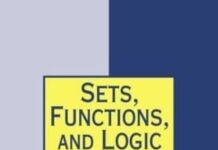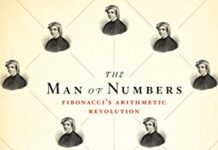
Ebook Info
- Published: 2000
- Number of pages: 368 pages
- Format: PDF
- File Size: 7.40 MB
- Authors: Keith Devlin
Description
The great book of nature, said Galileo, “can be read only by those who know the language in which it was written. And this language is mathematics.” In The Language of Mathematics, award-winning author Keith Devlin reveals the vital role mathematics plays in our eternal quest to understand who we are and the world we live in. More than just the study of numbers, mathematics provides us with the eyes to recognize and describe the hidden patterns of life―patterns that exist in the physical, biological, and social worlds without, and the realm of ideas and thoughts within.Taking the reader on a wondrous journey through the invisible universe that surrounds us―a universe made visible by mathematics―Devlin shows us what keeps a jumbo jet in the air, explains how we can see and hear a football game on TV, allows us to predict the weather, the behavior of the stock market, and the outcome of elections. Microwave ovens, telephone cables, children’s toys, pacemakers, automobiles, and computers―all operate on mathematical principles. Far from a dry and esoteric subject, mathematics is a rich and living part of our culture. An exploration of an often woefully misunderstood subject, The Language of Mathematics celebrates the simplicity, the precision, the purity, and the elegance of mathematics.
User’s Reviews
Editorial Reviews: Review “Keith Devlin’s The Language of Mathematics is the perfect book for people who have questions about math they’ve always wanted to ask but were afraid they wouldn’t understand the answers to.” ―Boston Book Review“Devlin takes readers on a tour of the numeric underpinnings of everyday life.” ―Wired“As Galileo put it, ‘The great book of nature can be read only by those who know the language in which it was written. And this language is mathematics.’ Keith Devlin is an apt teacher of the language.” ―Scientific American“Devlin, who is able to write for generalists, embarks on the sea of numbers, shapes, and patterns. His voyage potentially had sixty or so destinations, the discrete topics that make up mathematics; to manage the trip Devlin limits the port of call to eight . . . Devlin’s tour indeed achieves its purpose.” ―Booklist“Those interested in a broad take on the history and current state of the art of math should look no further than The Language of Mathematics.” ―Publishers Weekly About the Author Keith Devlin is a Senior Researcher and Executive Director at Stanford’s H-STAR institute, which he co-founded. He is also a Consulting Professor in the Department of Mathematics, and a co-founder of the Stanford Media X research network. NPR’s “Math Guy,” he is the author of many books, including The Math Gene and Man of Numbers: Fibonacci’s Arithmetic Revolution. He lives in Palo Alto, California.
Reviews from Amazon users which were colected at the time this book was published on the website:
⭐The Language of MathematicsFrom Omicron in Cetus this great, great book.The prologue itself is packed with gold; don’t skip it, it sets up the approach to the entire book…looking for patterns, discovering the geometric and numerical underpinnings of so many things, even when they are not apparent at first sight( or non sight if they‘re invisible): patterns of motion, reasoning, shapes, and chance.The first two chapters cover rational and irrational numbers, prime numbers, modular arithmetic, encryption, syllogistic reasoning and proof by mathematical induction. There are historical references mixed in, here and throughout the book. I found these first two chapters to be the most challenging. Why? The concepts don’t readily lend themselves to visual or geometric constructions. The patterns are there, but they must be drawn from murkier waters. Just push on; don’t let discouragement rise to the level of abandonment…because…From chapter three onwards it gets better. To include:The harmonic series, where the terms get smaller and smaller, but do they add up to a finite value? What do musical sound waves look like?The resolution of Zeno’s paradox by adjustments of the pattern; the author points out that an infinite series can sum to a finite value if the pattern is recognized and manipulated. But not always; just ask the harmonic series.If you’re the artistic type, chapters four and five, addressing the mathematics of shape and beauty, are for you. Alas, beauty it seems, is not in the eye of the beholder. Some sculptures and paintings are more pleasing to the eye, and certain works of music are more pleasing to the ear. Symmetry, perspective and projection are covered. How the Renaissance artists recognized and solved the problem of representing depth on a two dimensional canvas. The great da Vinci saves the day with foreshortened perspective and infinite convergence of lines. But there is also symmetry in certain math equations. These are abstract symmetries, not visual, and so equations take on a kind of “shape.” Interesting thought.Klein bottles, Mobius strips, the bending and twisting of Euclid’s world into new pastures of form and analysis.Knot theory is presented. Never heard of it, but very interesting…the DNA helix can be approached with knot math.What’s the best way to stack grapefruits? Randomly or in the familiar arrangement of a pyramid? This is not so easily answered; read this book and find out.The book contains two sections of glossy color plates depicting a variety of computer generated weird surfaces.There are just too many concepts in this fascination book to go further. The book contains eight chapters, plus the prologue, which begins on page number 1 and ends on page number 338. Notwithstanding the first two chapters, there are many graphs and illustrations along the way. One more thing…Special bonus: For the reader who likes history, there is a very interesting discussion at the end of chapter two concerning the true authorship of The Federalist Papers. History has been silent on whether Hamilton or Madison wrote some of the papers. It turns out that everyone leaves a fingerprint in the way they write; a pattern exists (the frequency of select words, the use of punctuation, sentence length and so forth). An algorithm was developed to analyze with great accuracy these hidden fingerprints, and the correct authorship was determined.
⭐Devlin defines mathematics as the science of patterns – numerical patterns, patterns of shape, patterns of motion, patterns of behavior, voting patterns, etc. Throughout history dating back at least to the Greeks (around 500 to 300 BCE) where they were concerned with primarily geometry forward to the present where we deal with relativity and quantum mechanics, we have been devoted to learning more about these patterns.Throughout history we have had many great minds contribute to our understanding of these patterns through the use of mathematics. Devlin introduces us to the work of these great minds, such as, to name a few, Pythagoras (~580 BCE), Heraclitus (5th century), Aristarchus (~300 BCE) Diophantus (~250 BCE), Nicolaus Copernicus (1473-1543), Johannes Kepler (1571-1630), Galileo Galilei (1564-1642), Marin Mersenne (1588-1648), Pierre de Fermat (1601-1665), Gottfried Leibniz (1646-1716), Isaac Newton (1643-1727), Christian Goldbach (1690-1764), Leonhard Euler (1707-1783), George Boole (1779-1848), Bernhard Riemann (1826-1866), James Clerk Maxwell (1831-1879), Hermann Minkowski (1864-1909), David Hilbert (1862-1943), Albert Einstein (1879-1955), Kurt Gödel (1906-1978). Of course, many more are discussed in the book, and their work also contributed to our understanding of the patterns in our world.The subtitle of the book is “Making the invisible visible.” A very good example of this in the book is Maxwell’s equations describing the electric and magnetic fields. The equations, interestingly, don’t provide us with an explanation of electromagnetism, but provide us with the mathematics to see the invisible. They make the invisible electromagnetic radiation visible through the math.I found his discussion in chapter seven on probability very interesting; I have a whole new way of looking at statistics and probability. Also, in chapter eight, he provides a very good explanation of the light cone in Minkowski spacetime. I read about this in one of Stephen Hawkins’ books, but Devlin provides a much more meaningful description here.As the author himself admits, he could not practically cover every branch of mathematics – “one must make choices,” but the ones he does cover, I think, give us a good feel for the development of mathematics over the years and our quest to understand those patterns.Overall, this is a good book to learn about how mathematics reveals the patterns in the world, and it gives you a history lesson on the development of mathematics over the years as well.
⭐OK, so I guess someone who thinks maths is boring probably wouldn’t want to read the book, and might give up when it started getting a little mathematical. That’s a shame, as with a little effort (more or less, depending on your mathematical background) this book not only exposes the beauty of maths, but shows you how it underpins just about every are of life.One thing I particularly liked about the book was the way he showed how seemingly non-related areas of maths all came together. By extracting the patterns in a specific area, and then looking at those patterns in isolation, you can prove all sorts of results that can then be applied to areas you never thought were related. He gives quite a few examples of this.If you’re prepared to think a little, then you should read this book. I will certainly read it again (and probably again…)
⭐Keith Devlin has the ability to explain mathmatical concepts. This is the first time have truely understood what calculus, sets & number theorey are all about. Most popular maths books just tantalise with the final conclusion -leaving the reader deeply unsatisfied because they cannot understand how it was reached. Most instructional maths books start very simply then completely lose the student as they shortcut into assumed knowledge and half explanations. Either is probably OK for the mathmatically gifted or knowledgeable. But for most of us it is very frustrating.Prof Devlins book is different. He manages to see things from the students point of view consistantly and communicate that. He is very frank about unexpected findings in Maths (Like the power of integration). The fundamental theorems (Of arithmatic, calculsu and algebra) actually mean smetthing after he has finishce explaining and putting them in context. This book would be aa brilliant primer for an pre university student but can be understood at any age – schoolchild or pensioner (Like me).
⭐This book gives a fantastic overview of many, admittedly not all, areas of Mathematics – covering many topics in University Level depth. That may put some people off, but the author writes in a way that makes everything interesting and engaging.A fantastic read for a Mathematics Student in particular as it gives an appreciation of the subject that isn’t readily observable in daily life without some prior knowledge.
⭐Difficult if you are only vaguely mathematically minded!
⭐very thought provoking well worth reading
Keywords
Free Download The Language of Mathematics: Making the Invisible Visible in PDF format
The Language of Mathematics: Making the Invisible Visible PDF Free Download
Download The Language of Mathematics: Making the Invisible Visible 2000 PDF Free
The Language of Mathematics: Making the Invisible Visible 2000 PDF Free Download
Download The Language of Mathematics: Making the Invisible Visible PDF
Free Download Ebook The Language of Mathematics: Making the Invisible Visible



